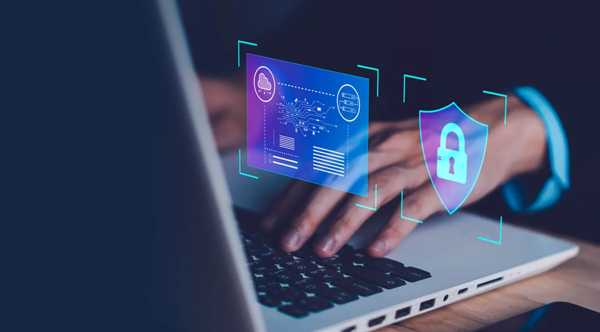

In today’s interconnected world, cybersecurity threat assessments are essential for protecting sensitive data and digital infrastructure. By carefully examining potential risks and system vulnerabilities, organizations can strengthen their defenses against cyberattacks. This process involves reviewing existing protections, identifying weaknesses, and applying targeted improvements. Staying updated on threat evaluations not only boosts resilience but also encourages a forward-looking approach to digital safety.
In today’s interconnected world, cybersecurity threat assessments are essential for protecting sensitive data and digital infrastructure. By carefully examining potential risks and system vulnerabilities, organizations can strengthen their defenses against cyberattacks. This process involves reviewing existing protections, identifying weaknesses, and applying targeted improvements. Staying updated on threat evaluations not only boosts resilience but also encourages a forward-looking approach to digital safety.

A cybersecurity threat assessment is a structured process designed to pinpoint vulnerabilities, measure potential risks, and analyze the techniques used by malicious actors. It combines technical scrutiny with strategic risk management, reviewing current defenses and estimating the chances and consequences of successful attacks. This systematic evaluation allows organizations to prioritize initiatives and allocate resources where they are most effective.
An effective assessment typically includes several interconnected stages:
Asset Identification: Determining which digital assets—such as intellectual property, databases, cloud services, or operational technologies—require the highest level of protection.
Vulnerability Analysis: Identifying weaknesses like outdated software, poor configurations, or insecure network designs. Tools such as penetration testing and vulnerability scanning are essential here.
Threat Identification: Recognizing possible adversaries (e.g., cybercriminals, hacktivists, or insider threats) and attack methods (such as phishing, ransomware, malware, or DDoS).
Risk Evaluation: Calculating the likelihood and potential impact of attacks, often through risk scoring, which helps guide investments and set response priorities.
Different organizations apply varying methodologies depending on complexity and scope:
Qualitative Assessments: Often based on frameworks like the NIST Cybersecurity Framework, this method draws on expert judgment, historical data, and industry insights. Risks are frequently visualized through matrices or heat maps.
Quantitative Assessments: This approach applies numerical analysis to estimate probabilities and financial consequences. Techniques such as Annualized Loss Expectancy (ALE) convert technical threats into budget-related metrics.
Hybrid Models: By blending qualitative insights with quantitative evidence, hybrid assessments provide a more balanced and detailed understanding of risks.
Threat assessments must account for both existing and emerging risks. Common areas of focus include:
Phishing: Deceptive messages or websites trick users into revealing information. Assessments may simulate phishing to test human resilience.
Malware and Ransomware: Increasingly advanced malicious software demands robust endpoint protection and thorough analysis during assessments.
Insider Risks: Both intentional and accidental insider actions can cause data loss, requiring evaluation of human behavior alongside technical controls.
Supply Chain Vulnerabilities: Weaknesses in third-party vendors or partners can be exploited, making supply chain security an important focus.
Advanced Persistent Threats (APTs): Long-term, stealthy intrusions that require detection of unusual patterns such as abnormal traffic or lateral system movement.
Although structured, threat assessments face certain constraints. Cyber threats evolve rapidly, and new vulnerabilities may emerge after an assessment is complete. A shortage of cybersecurity expertise also makes deep evaluations difficult.
Another limitation lies in relying too heavily on past data to forecast future risks, as novel attack methods may diverge from historical patterns. Additionally, assessments sometimes miss sector-specific or geographic nuances, underlining the need for contextual intelligence and ongoing monitoring.
Cybersecurity is a constant process rather than a one-time project. Digital environments evolve due to new technologies, regulatory changes, and shifting attacker tactics. Continuous monitoring with tools such as intrusion detection systems (IDS) and security information and event management (SIEM) enhances periodic assessments.
Regular reassessment ensures organizations can quickly adapt to emerging vulnerabilities and adversary methods. This proactive cycle reduces the window between identifying threats and applying fixes, minimizing potential damage.
Incorporating threat intelligence significantly strengthens assessments. By analyzing internal logs alongside external intelligence feeds, security teams gain real-time visibility into threats. Data on indicators of compromise (IOCs), adversary tactics, and known exploits enrich evaluations and improve response planning.
Threat intelligence makes assessments more predictive, enabling organizations to focus resources on the most urgent risks and strengthen countermeasures before attacks escalate.
The evolution of threat assessment will increasingly rely on advanced technologies:
AI and Machine Learning (ML): Capable of analyzing vast datasets to detect patterns and anticipate attacks faster than manual methods.
Blockchain: Offers transparency and tamper-proof integrity in transactions, supporting stronger security models.
Zero Trust Architectures: Redefine traditional perimeter-based security by enforcing strict verification across networks.
At the same time, compliance with data protection and privacy laws is becoming critical. Threat assessments must ensure not only technical resilience but also regulatory adherence to avoid legal and financial penalties.
Cybersecurity threat assessments are fundamental for developing strong digital defenses. Through asset identification, vulnerability testing, and continuous monitoring, organizations can build a layered and adaptive security posture. By combining traditional frameworks with new technologies like AI and Zero Trust, businesses can stay ahead of evolving cyber threats.
In a constantly changing digital world, maintaining proactive and ongoing threat assessments is key to protecting both information and organizational integrity.